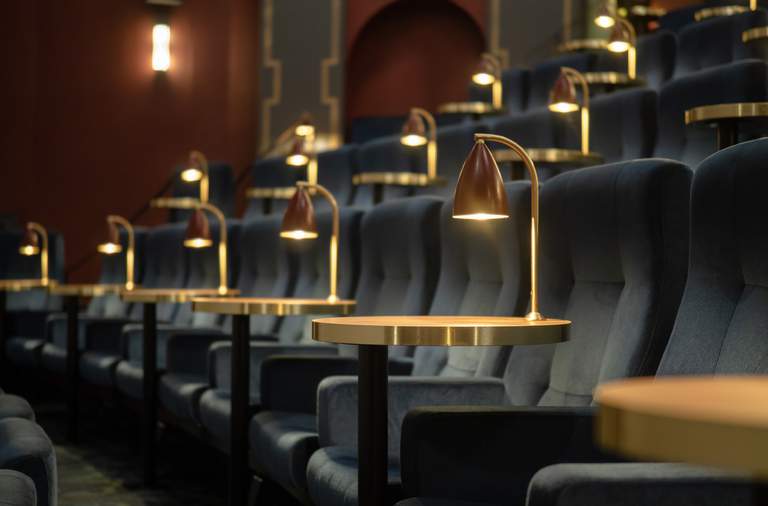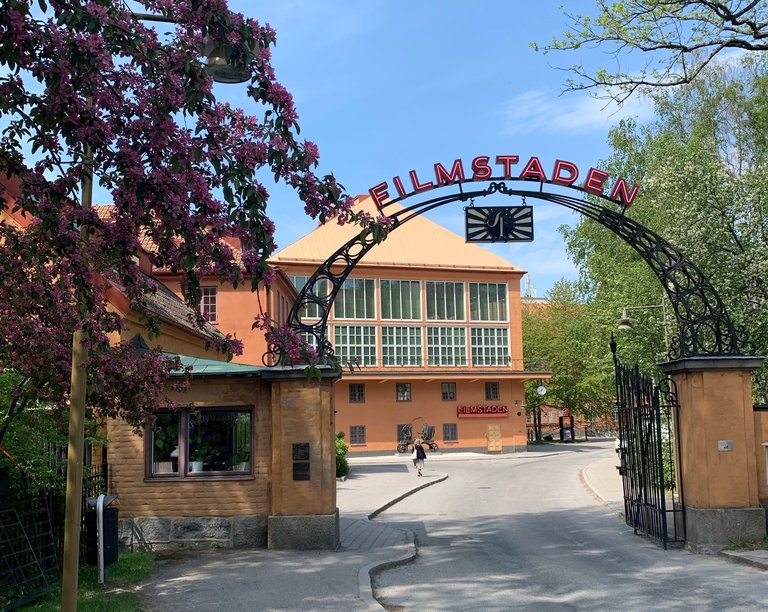Ingmar Bergman's Stockholm
Publish date: 17 February 2025
One of the greatest filmmakers of the 20th century, Ingmar Bergman, was a Stockholm native. Here are some places closely associated with him.
Ingmar Bergman (1918-2007), whose unique cinematographic style made him one of the most notable directors of the twentieth century, grew up in Stockholm. As such there are several places to visit for any cinephile who wishes to walk in Bergman’s footsteps.
Ingmar Bergman grew up in a religious household. The contradiction between the Christian message of love and his father’s strict disciplinary rule left a lasting impression felt throughout his works. The family lived first on Villagatan 22 and then on Storgatan 3, in the privileged neighborhood of Östermalm. Östermalm continued to play an important role in Bergman’s life and career.
A movie about horses at the Sture-Teatern cinema (which closed in 2001) launched his lifelong love of cinema, and the first office of the production company Cinematograph was located in Östermalm. The Royal Dramatic Theatre is another recurring place in Bergman’s life. Both as director for numerous plays and as director in charge of the prestigious theatre in the mid-sixties. Ingmar Bergmans Plats and Ingmar Bergmans Gata, the square and street named in his honor, are located just behind the theatre.

Movie night in Stockholm
Various Stockholm locations are a backdrop in most of Bergman’s early films. Not only Östermalm but Gamla Stan and the nature of the Stockholm Archipelago as well. Bergman spent his summers as a child and teenager in the archipelago. In his films, a love of the archipelago’s cliffs and islands often represents light, freedom, and happiness. It makes up a strong contrast to the dark city.
The intense, nostalgic love of the archipelago appears in the movies Summer with Monika (1952), which was filmed on the islands around Ornö in the Stockholm region; Wild Strawberries (1957), filmed on Ängsö and Dalarö, and Summer Interlude (1951) was also filmed on Dalarö. Also, a crucial scene in his 1957 masterpiece The Seventh Seal (1957) was filmed at the natural rock formations of Skeviks Grotta on Värmdö.
Södermalm is another recurring place. Skinnarviksparken, one of Stockholm’s most beautiful viewpoints, is featured in two of Bergman’s films; the final scene in his debut movie Torment (1944), and the site of the first kiss in Summer with Monika.
Another important place for Bergman was Gamla Filmstaden in the northern suburb of Solna. Filmstaden Råsunda was the largest film studio in Sweden and the center of the Swedish movie industry during the first half of the 20th century, and Bergman filmed 30 of his films here. Today the studio lot has been turned into offices and restaurants. Visitors can still take a guided tour and catch a movie at the modern repertoire cinema.
Bergman’s fame rests on large productions of remarkable quality throughout a career that spanned nearly sixty years. Bergman directed 75 films and 170 productions for stage, television, and radio and his body of work has inspired countless other directors like Ang Lee, Wes Anderson, and David Fincher.

Discover Stockholm's Hollywood
Selected filmography
- Crisis (1946)
- Summer with Monika (1952)
- The Seventh Seal (1957)
- Wild Strawberries (1957)
- The Virgin Spring (1960)
- Persona (1966)
- Hour of the Wolf (1968)
- Cries and Whispers (1972)
- Scenes from a Marriage (1973)
- Autumn Sonata (1978)
- Fanny and Alexander (1982)
